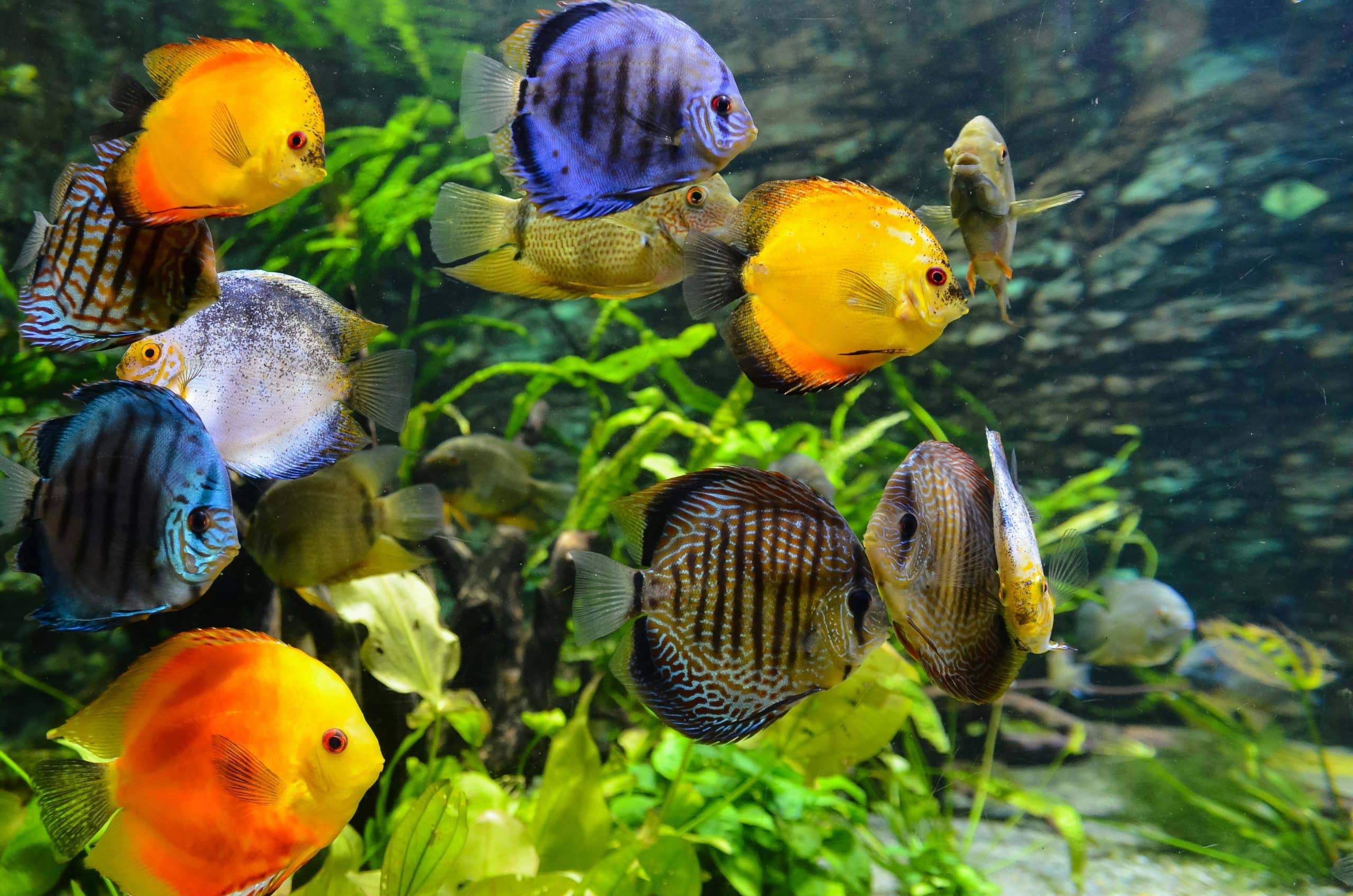What are the best fish for a community aquarium?

Creating a vibrant, colorful community aquarium can be a rewarding experience, but knowing which fish species are the best to include can be a daunting task. The key to a thriving community tank lies in careful planning, a thorough understanding of different species’ needs, compatibility, and their peaceful nature. In this article, we’ll guide you through the process of selecting the most suitable fish for your community aquarium.
Understanding the Basics of a Community Aquarium
Before diving into the best fish for your community tank, you must first understand the basics of keeping a freshwater aquarium. Freshwater aquariums are the most popular type of aquarium among hobbyists due to their easy maintenance and the wide variety of species available.
A lire en complément : What’s the best way to keep your fish tank algae-free?
In a community tank, several species of fish coexist. The aquarium size will largely dictate the type and number of species you can keep. Generally, a larger tank size allows for more species and reduces the risk of territorial disputes. The tank should also have plenty of hiding spots and swim room for the fish.
Additionally, understanding the water parameters is crucial. Most freshwater fish thrive in a pH range of 6.0 to 7.5. However, different species may require specific water parameters, so it’s essential to keep this in mind when selecting your fish.
Cela peut vous intéresser : What are the best chew toys for teething puppies?
Best Fish Species for a Community Aquarium
Now let’s delve into the best species of fish that are well-suited for a community aquarium. These species are generally peaceful, adaptable, and relatively easy to care for, making them ideal for your community tank.
Tetras are one of the most suggested fish for community aquariums due to their peaceful nature and small size (usually around 1 to 2 inches). They come in a wide variety of colors and patterns, adding a vibrant touch to any tank. Tetras are schooling fish, so it’s best to keep them in groups of at least five.
Guppies are another excellent choice. They are small, colorful, and very easy to care for. Their peaceful nature makes them excellent tank mates for other small, non-aggressive fish species. Guppies are livebearers, meaning they give birth to live young, providing an exciting opportunity to watch the breeding process.
Corydoras catfish are a bottom-dwelling species that are excellent for community tanks. They grow up to 2 inches and have a peaceful temperament. Corydoras help keep the tank clean by consuming leftover food that sinks to the bottom.
Lastly, Mollies are a versatile fish that are easy to care for and get along well with other peaceful fish. They prefer a bit of salt in their water, so ensure this need is compatible with other fish in your tank.
Selecting the Right Fish for Your Community
While the species mentioned above are generally well-suited for community tanks, it’s crucial to consider your specific situation. The size of your tank, the water parameters, and the existing inhabitants will all influence which species are the best fit.
For smaller tanks, under 10 gallons, small and peaceful species like tetras and guppies are a great choice. Larger tanks, 20 gallons or above, can accommodate a wider variety of species and allow for more complex community setups.
If you already have fish in your tank, their needs and temperaments must also be considered. Aggressive or territorial fish may not be a good fit for a peaceful community tank. Additionally, consider the water parameters that your existing fish require.
Taking Care of Your Community Aquarium
Once you’ve selected the best fish for your community aquarium, proper care is crucial to maintain a healthy and thriving environment. Regular water changes, proper feeding, and monitoring for signs of illness are all part of routine aquarium care.
Aim to change 10 to 20% of the water in your tank every week. This helps to keep the water parameters stable and remove waste products. When feeding your fish, remember that less is more. Overfeeding can lead to water quality issues and health problems for your fish. Feed a varied diet to ensure your fish receive all the necessary nutrients.
Regularly observe your fish for signs of illness such as changes in behavior, eating habits, or physical appearance. Early detection is crucial for successful treatment. Remember, a healthy fish is a happy fish!
Community aquariums offer a unique opportunity to enjoy a variety of freshwater species in a single tank. By carefully considering your choices and providing the necessary care, you can create an aquarium that is as enjoyable for your fish as it is for you.
Choosing Fish Based on Tank Size
Tank size is an essential factor in determining which fish species are suitable for your community aquarium. A common rule of thumb is to have 1 inch of fish per gallon of water, but this may vary depending on the species’ adult size and behavior.
For instance, tetras and guppies are small, with an adult size inches usually not exceeding 2 inches. They’re ideal for smaller tanks (10 gallons and under) and should be kept in groups, so factor this into your calculations. On the other hand, mollies can grow up to 4 inches and might need a minimum tank size of 20 gallons or more.
Corydoras catfish are an excellent addition to medium and large tanks (20 gallons and above) due to their size and the fact they are bottom dwellers—they won’t compete for space with mid or top water species.
When considering community fish, also bear in mind their swimming habits. Some species prefer to swim at the tank’s upper levels, while others stick to the bottom. A mix of species that occupy different levels of the tank ensures a vibrant, visually pleasing community tank.
Conclusion: Choosing and Caring for Your Community Aquarium
Creating a freshwater community aquarium offers a fascinating glimpse into the diversity of aquatic life. The best species for such a setup are generally small, peaceful, and adaptable to a range of water conditions. Tetras, guppies, corydoras catfish, and mollies are all excellent choices.
Remember, the right tank size is crucial. It determines how many fish you can keep and what species will thrive in it. Even more importantly, remember that bigger tanks are easier to maintain as they provide more stable water conditions.
Ensure that the temperature suggested for your chosen species aligns with your tank’s conditions. Regularly testing the water parameters keeps the fish healthy.
Once you have a thriving community aquarium, regular care is crucial. Regular water changes, appropriate feeding, and fish health monitoring are all part of keeping a successful aquarium.
In conclusion, creating a community aquarium can be a rewarding venture, providing both a beautiful display and an enjoyable hobby. By carefully selecting suitable species based on their temperament and needs and providing them with the necessary care, you can create a thriving, vibrant underwater ecosystem right in your home.
